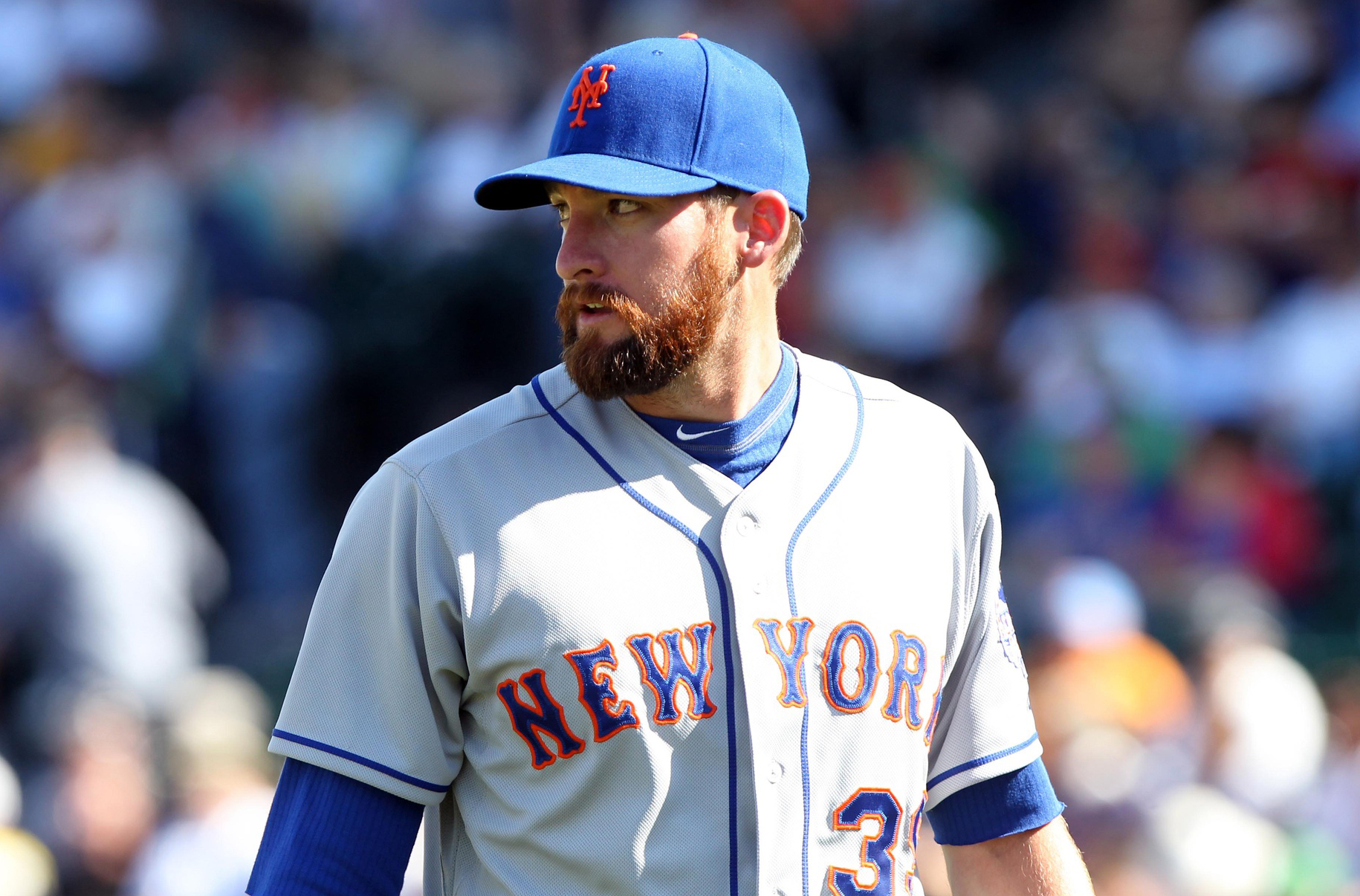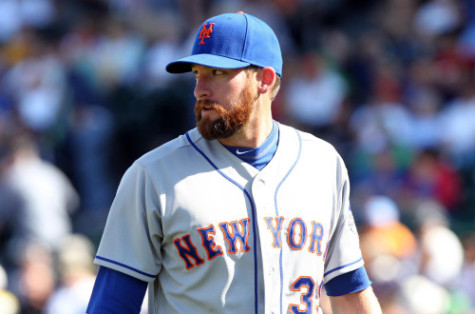 Before tonight’s game against the Washington Nationals, the Mets announced that closer Bobby Parnell had surgery to repair the herniated disk in his neck.
Before tonight’s game against the Washington Nationals, the Mets announced that closer Bobby Parnell had surgery to repair the herniated disk in his neck.
The procedure was performed by renowned spinal surgeon Dr. Robert Watkins in California.
Dr. Robert Watkins has treated more professional athletes with spinal injuries than any other surgeon in the world.
Sandy Alderson said he expects Parnell to be ready for the 2014 season.
Original Post 12:00 PM
As was reported yesterday, Mets closer Bobby Parnell will require surgery to repair a herniated disk in his neck according to Adam Rubin of ESPN New York.
Parnell, 29, has tried to avoid the procedure by resting for several weeks and he also received an epidural shot in his neck, but to no avail.
Parnell, who is arbitration eligible after this season, was having the best season of his career since taking over as the team’s closer.
The righthander was pitching intelligently and using his secondary pitches better than he ever has before and the results were quite impressive, posting a 2.16 ERA and 1.00 WHIP with 22 saves in 49 games this season.
More importantly, Parnell saw a drastic decline in his home run rate which was at an impressive .18% down from a 1.10% average over the three previous seasons. Additionally, Parnell was missing more bats and had a career best .205 BAA and 2.15 BB/9.
Terry Collins said that if Parnell has the surgery he would be ready for Spring Training, although when he was asked to expand on that said, “I’m not doing the surgery. He should, probably [be ready], but I’m not going to [promise that].”
From my own family’s experience with surgery to repair a herniated disk, that sounded like a very optimistic appraisal by the Mets’ manager. I decided to research this further and discovered a study that was performed regarding disk herniation and major league baseball players.
It has been postulated that the repetitive torque-producing motions of a baseball player may have negative implications after a disk injury. Sixty-nine lumbar disk herniations (40 treated operatively, 29 nonoperatively) in 64 professional baseball players were identified, and important outcome measures including successful return to play, time to recovery, career longevity, and performance based on vital statistics to each position were documented.
Ninety-seven percent of baseball athletes successfully returned to play at an average of 6.6 months after diagnosis. Athletes treated operatively required significantly more time to return to play than those managed nonoperatively – 8.7 vs 3.6 months, respectively.
Major League Baseball (MLB) players have the longest season of any of the major professional sports, with a regular season of 162 games over the course of 6 months. This extensive training and playing period, along with the repetitive stresses of batting and pitching, poses a unique challenge to the successful treatment of a career-threatening injury such as a lumbar disk herniation.
Statistical Performance
For pitchers in the operative and nonoperative cohorts, the number of wins, saves, innings pitched, and strikeouts did not change from average pre-injury values at either 1 or 3 years post treatment. However, pitchers treated operatively had a significantly poorer ERA and WHIP at 1 and 3 years after injury, respectively, when compared with pre-injury levels. With the limited numbers available, pitchers treated nonoperatively had no significant change in any measured performance parameter at 1 or 3 years when compared with pre-injury statistics.
Parnell remains under the Mets’ control through the 2015 season, and after earning $1.7 million this season, he should easily double that in arbitration this Winter. He’s a big piece for the Mets moving forward and has established himself as an effective closer. However, this surgery, no matter how rosy an outlook is portrayed, is certainly something to be concerned about and his readiness for Spring Training seems to dispute the evidence for operational disk repair rather than nonoperational.














